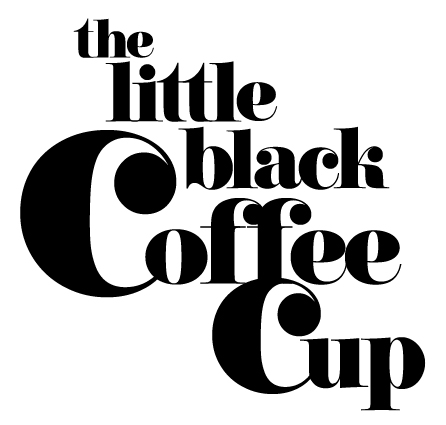It's Time to Quit Alternative Milks | a Case for Drinking Black Coffee.

As I sit down to write this post I'm sipping on a RTD cold-brew coffee and almond milk beverage that I picked up in the refrigerator section of the local grocery store. The packaging on the bottle checked all the boxes for a health-conscious shopper—dairy-free, unsweetened, carrageenan-free, and heck, even rainforest alliance. Despite the glowing front label, it has the mouthfeel of melted synthetic ice cream (is that a thing?) and tastes sour—you know, that distinct sharp flavor that comes from blending almond milk and coffee that most of us non-dairy drinkers either a) pretend doesn't exist because we're so thankful we have an option other than soy, or b) attempt to mask with a boatload of sugar.
Personally, I am not a fan of cows milk. I have been known to question the dairy industry's relationship to the coffee industry and for the duration of my coffee career have become a sort-of-advocate for non-dairy milks. In this, of course, I am not alone. The internet is awash with folks of all levels of nutrition expertise (note: I am not a nutritionist) championing non-dairy as delicious and healthful while more and more people are leaning towards plant-based lifestyles. As such, grocery store shelves are filling up with dairy alternatives. Even former dairy farmers are choosing to leave their cows behind to seek opportunities in this growing market.
The challenge with being an advocate for or against anything is that most issues aren't black and white. I am delighted that more and more people are choosing non-dairy milks, however I'm troubled by the overarching perception that non-dairy milks are healthy. Yes, one could make a compelling argument that choosing milk made from nuts, grains or seeds is better than that from a cow, (here's a recent study linking a bacteria found in dairy to rheumatoid arthritis) however, this blanket comparison has let alternative milks off the hook for being healthy in actuality. The truth is, not ALL non-dairy milks are healthful and most of us—myself included—have become too comfortable with ingesting them, serving them, and talking about them as though they are.
Over the past half-decade, we've been really busy trying to make alternative milk taste like something it's not—cow's milk. This is perhaps most obvious by the terminology we use like; alternative, substitute, or non-dairy. We want our nut milks to be creamy, silky, smooth, mild in flavor, and—when it comes to our coffee—we want baristas to be able to steam these milk alternatives (with the same tools we use for dairy) into the perfectly micro-foamed latte art. Is this too much to ask? Well, so far it hasn't been. For the most part, alternative milk producers and food scientists have been able to meet our lofty consumer demands. It seems every few months a new carton of non-dairy milk comes out that's more cow's milk-like than the last. This, of course, comes at a cost.
If you've ever tried your hand at making alternative milk some things you may have noticed are: a) how easy it is—just soak seeds, nuts or grains blended with water, and b) how almost immediately after blending the milk begins to separate. This inconvenient natural separation is often overcome by adding substances called hydrocolloids. Hydrocolloids are found in lots of processed foods from ketchup, to cakes, to jams, salad dressings, and candies, and they work as thickening agents, gelling agents and sometimes they emulsify, too. You've likely heard of or seen some of these names on your almond milk ingredient list; xanthan gum, guar gum, agar, carboxymethylcellulose, pectin, modified starch, and carrageenan. Carrageenan is perhaps the most infamous of the hydrocolloids and its inclusion in the food system has been in question since the 1970's. This gelling substance is derived from seaweed and research has linked carrageenan to intestinal ulcerations and neoplasms—or abnormal tissue growths in the body, characteristic of cancer. Though some non-dairy milks—like the one I'm drinking right now—boldly advertise they don't contain carrageenan, many alternative milks which take up space on retail shelves and are stocked behind coffee bars still do. Buyer beware.
As you can see, the trouble with chasing the perfect dairy-like texture and mouthfeel is that although these additional ingredients may be pleasing to our dairy-accustomed palates they ultimately end up in our guts. A study published in 2015 linked two common dietary emulsifiers; carboxymethylcellulose (CMC) and polysorbate-80 (P80), to colitis and metabolic syndrome in mice. Researchers have found that that, "processed foods containing emulsifiers and detergent-like compounds may damage the intestinal lining, potentially leading to “leaky gut” and systemic inflammation." In other words, these food additives are likely inflaming the linings of our colons, making us fat, and increasing our blood pressure—precursors to heart disease and type 2 diabetes. If you're having unexplained health problems perhaps your daily habit of a seemingly-healthy cashew barista milk latte is messing with the delicate balance of your gut microbiome. (Btw, highly recommend learning more your gut microbiome by tuning into the work of Dr. Giulia Enders via her Ted Talk and book titled Gut).
I know, I know, we've finally reached a moment in history where those of us that abstain from dairy can go out to a cafe and drink a tasty nut milk cappuccino only to learn that it could potentially be making us sick—it's a real downer. I'm bummed. One solution to this conundrum is to listen to and trust our palates and guts. If the non-dairy milk we are drinking has a synthetic mouthfeel and leaves us with a stomach ache perhaps we should cut it out of our diet or find another option. Not ALL non-dairy milks are unhealthy—we need to take the time to research and empower ourselves with the information required to be health savvy consumers. This enables us to see beyond flashy product packaging and identify what to avoid when we read an ingredients list. Maybe another solution is to forget the packaged stuff altogether and instead buy from places that make fresh milks, or get busy making our own at home. We could also be a little kinder to our seed, nut, and grain friends and their corresponding milks by accepting them for who they are. These milks don't have the texture or taste of cow's milk because they don't come from a cow—they have entirely different chemistry. They were born that way.
As I'm swishing down the last sip of this unsweetened-yet-saccharine, chemically altered coffee and almond milk beverage two things come to mind: I won't be buying this kind of processed product again, and I am reminded of the benefits of keeping things simple. I no longer want a rosetta on top of my oat milk latte and I no longer mind if the hazelnut milk has a funny texture and separates (because that's what milk made from hazelnuts does). When it comes to non-dairy milk, give me few ingredients, give me homemade, give me fresh, and if your alternative milk doesn't meet those requirements I'll gladly save the extra cash and drink my coffee black. My gut will probably thank me, too.
More Interesting reading on food additives from National Geographic
Btw, I didn't dig into natural flavors, flavor additives and artificial sweeteners in this article. These are ingredients that we also need to be mindful of when it comes to alternative milks.




